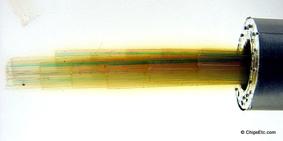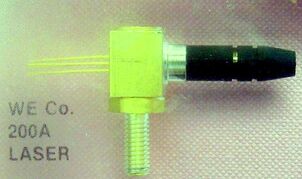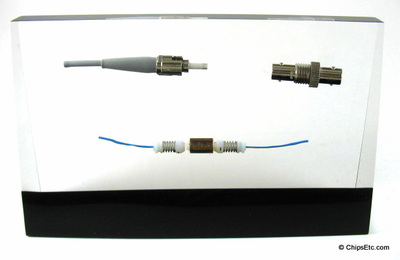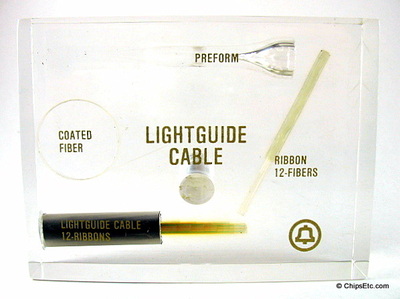Fiber Optics
in Telecommunications
History of Fiber Optics

AT&T Fiber Optic Cable (1980)
Fiber optic cables can carry significantly more data than metal cables, and at a much greater speed, with immunity to electromagnetic interference. Fiber optic technology is the transmission of data via pulses of light waves passed through glass threads. Most major telephone companies have replaced, or are in the process of replacing, traditional copper telephone lines with fiber optic cables.
Western Electric engineers started experimenting with fiber optic cable networks in the mid 1970's. By 1978, GTE, Bell Telephone and ITT each had their own operational fiber optic telephone links.
In 1980 AT&T was manufacturing their "Lightguide" fiber Optic cables at the Western Electric "Atlanta Works" plant. "Lightguide" was AT&T's original name for optical fiber transmission; it was derived from "waveguide", the name for the hollow pipes used to carry microwave signals.
In 1980, AT&T Corp. sought permission from the U.S. Federal Communications Commission to build a 611-mile fiber optic network connecting major eastern U.S. cities from Cambridge Massachusetts to Washington D.C. This Cambridge to Washington system was AT&T's very first fiber-optic route.
Work on the network began in 1981 and was operational by 1983. Light pulses were transmitted by 200A laser units manufactured by Western Electric. The technology was initially designated as type FT3 and had a capacity of 45 Mb/sec, but by 1984 had been upgraded to FT3C, carrying 90 Mb/sec. By 1984, fiber cables in the United States had reached 250,000 miles.



